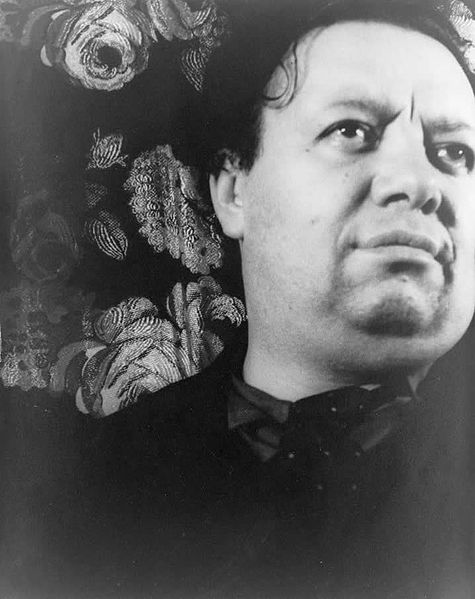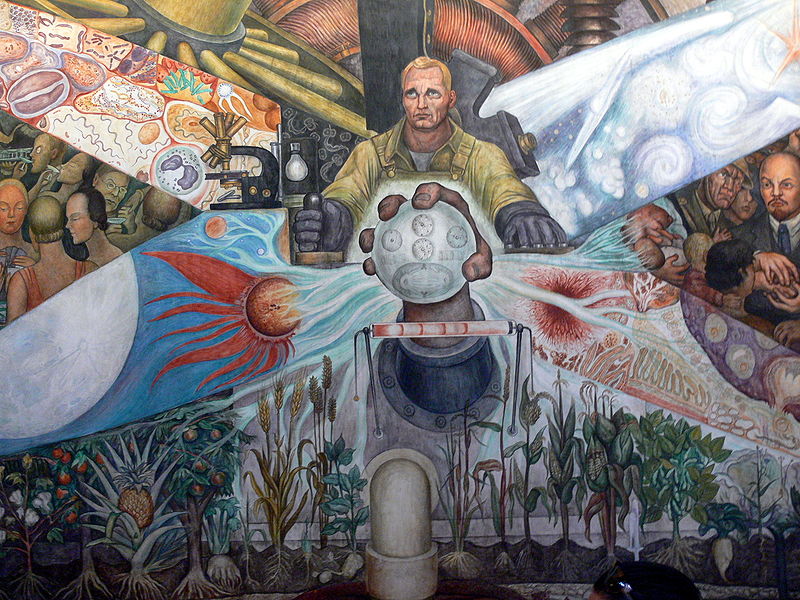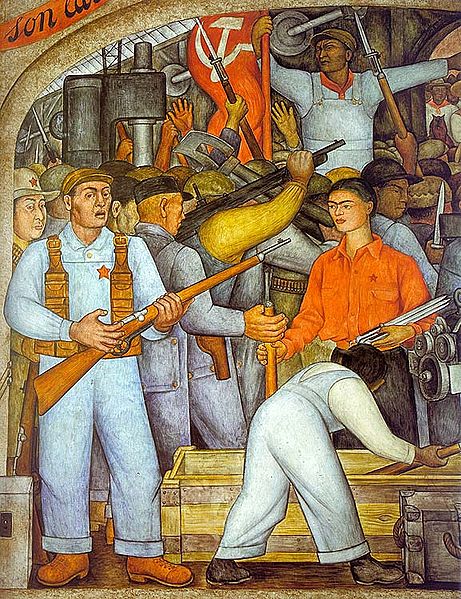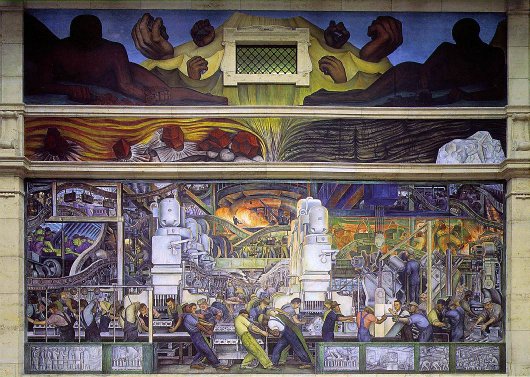| Diego Rivera | |
|---|---|
 |
|
| Photo by: Wikipedia Creative Commons | |
| Born | Diego María de la Concepción Juan Nepomuceno Estanislao de la Rivera y Barrientos Acosta y Rodríguez Dec. 8, 1886 Guanajuato, Guanajuato, Mexico |
| Died | Nov. 24, 1957 (at age 70) Mexico City, Mexico |
| Nationality | Mexican |
| Education | San Carlos Academy |
| Movement | Mexican Mural Movement |
| Field | Painting, Muralist |
| Wife | Frida Kahlo |
| Diego Rivera Famous Paintings | |
| Man, Controller of the Universe, 1934 | |
| La Mujer del Pozo, 1913 | |
| En el Arsenal, 1928 | |
| Frozen Assets, 1931 | |
| The Flower Carrier, 1935 | |
| Agrarian Leader Zapata, 1931 | |
| Complete Works |
Diego Rivera was born on December 8, 1886 in Guanajuato, Mexico. At the age of two, his family had already set him up an art studio; he couldn’t even read. They moved to Mexico City in 1892. His mom descended from Jews that had converted to Roman Catholicism, and his dad descended from Spanish Royalty. At the age of ten, Diego took evening classes at the Academy of San Carlos in Mexico City. He enrolled in military college to impress his dad, but quit two weeks later.
In 1891, he became a full time student at the Academy of San Carlos, studying art. His dad was an inspector at the National Department of Public Health, and because he was well connected, he got his son a scholarship from Teodoro Dehasa, another artist for Diego. Dehasa sponsored him on a trip to Europe beginning in 1907, and ended up lasting 14 years.
Rivera first traveled to Spain, and studied under a local artist, Chicharo for two years. He sent his art work home to justify the money that Dehasa was spending on him. He then went to Paris, and was fascinated by Cubism. From 1913-1918 he devoted himself to it. The only problem was, Diego hated the fact that the art could only be enjoyed by the rich; he thought everybody should be able to appreciate art.
In 1909, he met Angelina Belhoff, a Russian painter. She became his common law wife for the next 12 years. They ended up having a son, Diego, in 1916. They traveled Europe together, and participated in several shows. Around 1918, he met Elie Fauve, who became his best friend throughout his life. Elie kindled Rivera’s love of murals, and convinced him to go study the masters.
After 14 years of being in Europe, he returned home. He left Angelina and his son. During his time in Europe though, he had an affair with another Russian woman, Maria Vorobieff-Stebelska, and had a daughter Marika in 1918. He left them as well.
Since Rivera was well known in his home town, Jose Vasconcelos, the new minister of Public Education asked him to paint a mural at the National Preparatory School in 1922. It was Diego’s first mural, and he called it Creation. It is a fresco with gold leaves, showing divine light shining down on people. This work was heavily influenced by Mayan art styles, for he had visited ruins right before he designed it.
That same year, he married Guadalupe Marin, with whom he had two girls, Ruth and Guadalupe. Over the next four years, he painted 124 frescoes on the courtyard walls of the Ministry of Public Education. In 1927, Rivera went to Russia, as an official delegation of the Mexican Communist Party. When he got back, he divorced Guadalupe. He met Frida Kahlo the next year at a party he went to, and he married her in 1929. It was a very stormy relationship, for he cheated on her many times, and she cheated on him with the people he cheated on her with to get revenge. She couldn’t have children which upset Diego more, and the fact that she was an artist as well made him wary, for he didn’t want someone more famous than him.
He was appointed head of the Department of Plastic Crafts at the Ministry of Education, which he held until 1938. Rivera also created the union of Technical Workers, Painters, and Sculptors in 1930, with buddies Jose Clemente Orozco and David Siqueiros.
In November of 1930, he received his first commission from America which was at the Stock Exchange Club. He received a second soon after at the California School of Fine Arts. After that, Nelson Rockefeller asked him to paint a mural at the Radio Corporations Arts building. Unfortunately, it was destroyed because it had Lenin on it, and America was anti-communist.
Leon Trotsky in Russia was a communist leader who was fighting for control over the U.S.S.R. with Stalin, and Stalin won. Trotsky knew his life was in danger, so he asked Diego if he could come to Mexico. The permission was granted, and Leon Trotsky and his wife lived with Rivera and Kahlo, until they got into a fight and moved out.
In 1940, Frida and Diego were separated, divorced, and remarried within the same year. He was given a commission soon after at the Hotel de Prado, and he painted a mural with a phrase that said “God does not exist.” The mural was not shown for nine years. In July of 1954, Frida died, and Diego was deeply upset. Only after she died did he realize how much he loved her.
The next year though, he married his art dealer, whom he had known since 1946. Diego had an operation soon after and she cared for him. He died on November 24, 1957 and is buried at the Rotunda of Famous Men in the Civil Pantheon of Mourning.


